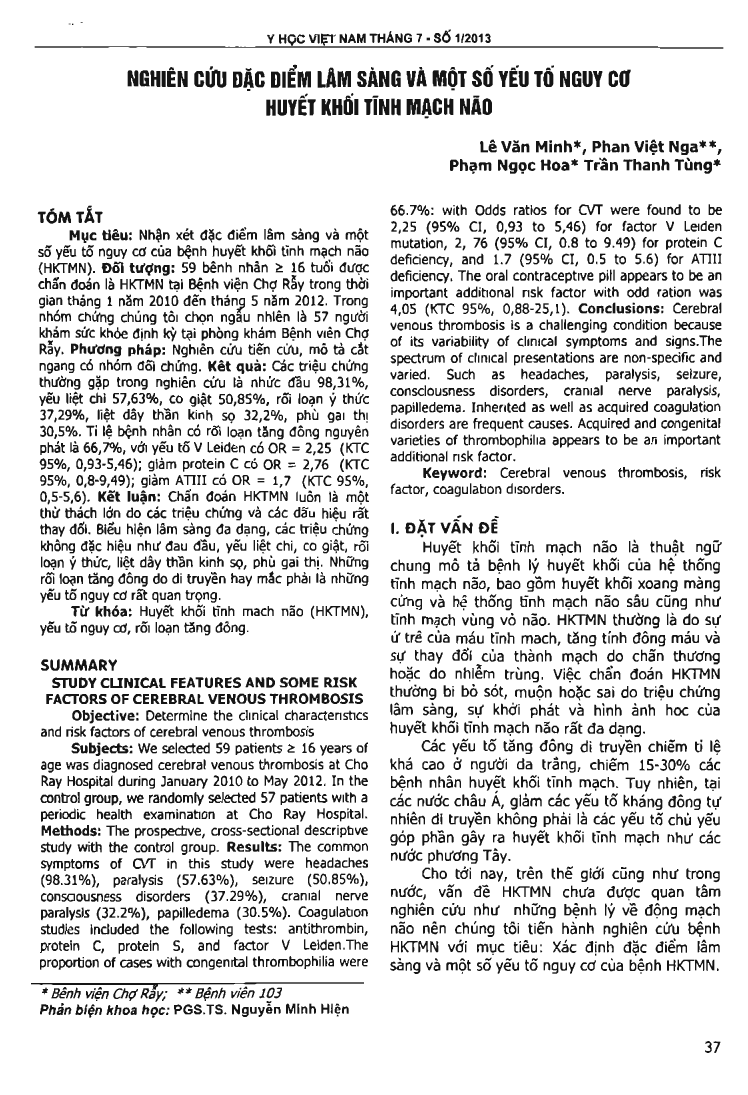
Objective: Determine the clinical characteristics and risk factors of cerebral venous thrombosis. Subjects: the authors selected 59 patients or = 16 years of age was diagnosed cerebral venous thrombosis at Cho Ray Hospital during January 2010 to May 2012. In the control group, the authors randomly selected 57 patients with a periodic health examination at Cho Ray Hospital. Methods: The prospective, cross-sectional descriptive study with the control group. Results: The common symptoms of CVT in this study were headaches (98.31 percent), paralysis (57.63 percent), seizure (50.85 percent), consciousness disorders (37.29 percent), cranial nerve paralysis (32.2 percent), papilledema (30.5 percent). Coagulation studies included the following tests: antithrombin, protein C, protein 5, and factor V Leiden.The proportion of cases with congenital thrombophilia were 66.7 percent: with Odds ratios for CVT were found to be 2,25 (95 percent CI, 0,93 to 5,46) for factor V Leiden mutation, 2, 76 (95 percent CI, 0.8 to 9.49) for protein C deficiency, and 1.7 (95 percent CI, 0.5 to 5.6) for ATIII deficiency. The oral contraceptive pill appears to be an important additional risk factor with odd ration was 4,05 (KTC 95 percent, 0,88-25,1). Conclusions: Cerebral venous thrombosis is a challenging condition because of its variability of clinical symptoms and signs. The spectrum of clinical presentations are non-specific and varied. Such as headaches, paralysis, seizure, consciousness disorders, cranial nerve paralysis, papilledema. Inherited as well as acquired coagulation disorders are frequent causes. Acquired and congenital varieties of thrombophilia appears to be an important additional risk factor.
- Đăng nhập để gửi ý kiến
